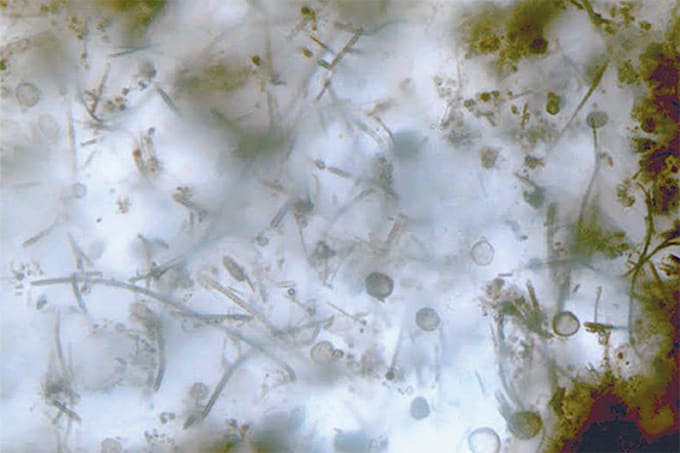Amber jewellery was highly valued amongst early humans, and historians have used it to identify those of wealth or status. But not all “amber” found in prehistoric sites is quite what it seems…
Carlos P. Ordiozola and colleagues employed electron probe analysis, infrared spectroscopy, X-ray diffraction and Raman spectroscopy to study amber beads recovered from two Iberian burial sites dated from the 2nd and 3rd millennia BC (1). The team were surprised to find that neither sample produced the characteristic spectra of the Baltic or Sicilian amber traded at that time.
The researchers set out to investigate, but finding the true composition of the beads was a challenge, says Ordiozola: “We were identifying an unknown resin that has undergone 7 millennia of oxidation and polymerization processes. We do not have similar ancient resins for comparison, so an accurate identification was always going to be tricky.” Nevertheless, the team were able to identify a number of interesting materials.
Infrared microscopy of the first set of beads indicated a core of aragonite, likely mollusc shell, and a coating of Pinus tree resin and apatitic calcium phosphate – thought to derive from dissolved human bone. X-ray diffraction of the second set of beads identified a core of calcium and a coating of calcite, cinnbar and an oxidized abietane. The authors identified this coating as a terpenous resin.
“We show that these communities developed complex technologies to manufacture amber equivalents, imitations or counterfeits,” says Ordiozola. The discovery of these Bronze-age fakes means historians may have to rethink the relationship between amber and wealth at archaeological sites. Though many things have changed since the 3rd millennium BC, it would seem that human ingenuity and the desire to “fake it until you make it” has remained a constant in our society.
References
- CP Odriozola et al., “Amber imitation? Two unusual cases of Pinus resin-coated beads in Iberian Late Prehistory (3rd and 2nd millenia BC)”, PLoS One, 14, e0216773, DOI: 10.1371/journal.pone.0215469.




